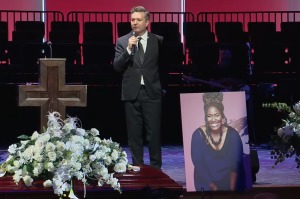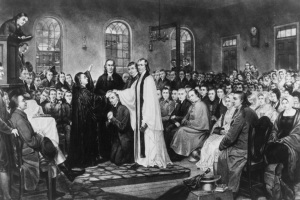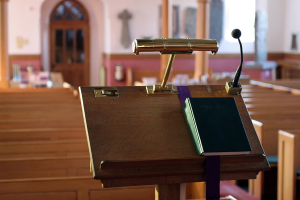Essentials of Church Revitalization: The Heart of the Matter (Pt. 1)
In 1978 the congregation of Houston's Second Baptist Church met in a stately building whose mighty steeple towered over its rapidly growing community, and whose imposing appearance might have given the impression to passersby that the church it housed was healthy, strong, and dynamic.
What casual bystanders would not have known was that the impressive facilities in 1978 housed a declining, perhaps dying, church.
Today that classic sanctuary building with the looming steeple still stands, but it is only one of several structures on that site, which is now one of five campuses spread across Houston, with two more underway for a congregation at this writing of more than 64,000 members, baptizing 2,000-3,000 annually.
Second Baptist is among the exceptions in the Southern Baptist Convention, which at present is experiencing the death of 800-1,000 of its churches every year, as noted in a recent Christian Post report. Further, the giant denomination that once experienced sustained dramatic growth is shrinking – though it is still the largest non-Catholic church body in the United States, with nearly 16 million members.
One of the ways to recover a dying church is for a congregation to receive as pastor "a young man who will come with ideas and concepts that are perhaps different from theirs," said Kansas City revitalization pastor John Mark Clifton, quoted in the Christian Post report.
That's exactly what Houston's Second Baptist Church did in 1978 when it called Ed Young as pastor. Young left a church of 6,000 to assume leadership of a congregation that had shrunk to 300-500 in weekly attendance. From day one, however, Young sensed he had been called to Houston itself, and the vision was to build a church that would impact the city, and from there the world.
Young's first challenge was revitalizing Second Baptist Church. Like an ER doctor he went straight to the heart of the matter, and decline was reversed with dynamics and growth that continue under his leadership, now in its 36th year.
What is this "heart" of church revitalization, and how can it be healed and strengthened? That's the question we will examine in this three-part series.
The Southern Baptist leaders and others asking the revitalization question are focusing on the right topic. The issue is not merely church growth, because there's a style of expansion that is fast, trendy, short-term, and shallow. It does not lead to true growth, which is sustained and results in committed followers of Christ rather than temporarily compliant church attenders who will depart when something more spectacular comes to town.
Vitality – Holy Spirit-infused energy – that keeps flowing is, excuse the pun, vital if church growth is to be genuine and lasting.
I have served on Ed Young's team for more than a dozen of his 36 years in Houston, and have observed up-close the dynamics of vitality that are not merely a passing growth trend, but that continue year after year.
In 1974, four years before Ed Young moved to Houston, I faced the same challenge of church revitalization in a much smaller way. After a career in the 1960s and early 1970s in journalism and government – including a three-year stint as a White House aide – I became a pastor, responding to a call God had given me as a 15-year old boy.
My first church was in a growing community near Mobile, Alabama. I could see the church had potential, but didn't know how to get it moving. The first problem I faced was the limited vision of key leaders. "We voted years ago to cap our membership at 850," the church's most influential member told me after I had accepted the congregation's call, resigned my job as one of the editors of a large daily newspaper, and moved with my family to the community.
I was certainly a "young pastor" with "different ideas" than the notion that church membership should be capped at 850. I knew the Great Commission's mandate to make and baptize "disciples" and proclaim the Gospel in "Jerusalem, Judea, Samaria, and the uttermost parts" of the world trumped a vote to limit church growth, so I began to strategize how to revitalize the church.
I spent much time reading the church growth literature that was beginning to flood pastors' bookshelves in the 1970s. There were so many theories – all with interesting labels – that I was bewildered.
Then one day while reading the Gospels it hit me – Jesus never lacked a crowd. He was reaching people constantly. It was painful, wearying, and definitely not the romanticized view of growth and vitality held by many in the 21st century American church. Jesus was moved by the needs of the mass of humanity and the individuals that comprised it. They gathered around Him sometimes on Galilee's shores so tightly He had to teach from a small boat anchored near the beach to keep from being pushed into the water.
Jesus' ministry, I realized, was the best church revitalization and growth example around. The Gospels, which report on what Jesus said and did, constitute the best "manual" for church revitalization and growth.
The heart of the matter was and is for a church to take itself seriously as the "body of Christ." That means understanding and implementing in contemporary style the incarnational ministry of Jesus Himself.
I began to think of my task as a senior pastor as that of building the "Jesus church." That change in my attitude was transformational for the congregation itself. As we began to implement strategies based on "the Jesus model" vitality increased, along with growth. A year later the church was conducting two Sunday morning Bible study hours and two worship services.
Few in the congregation thought about whether or not we had exceeded the 850 membership limit.
Now, four decades later, I see on a much bigger scale the "Jesus model" implemented daily in one of America's largest churches, resulting in sustained vitality and expansion.
The heart of the matter relating to church revitalization and growth is Jesus and His incarnate ministry because, as we will see in the next installment, if the church is the body of Christ then it ought to do what Jesus did in His body.




























